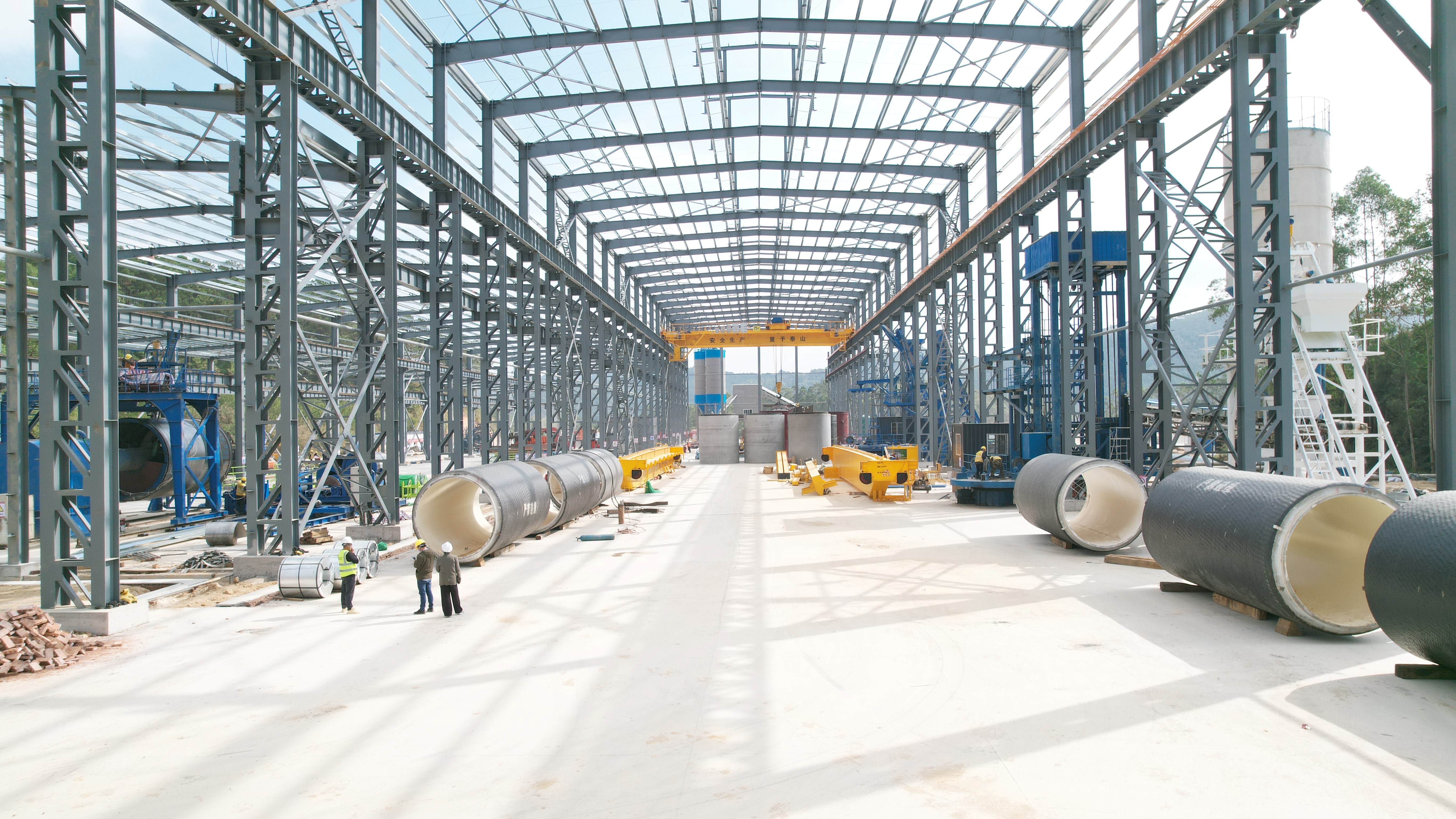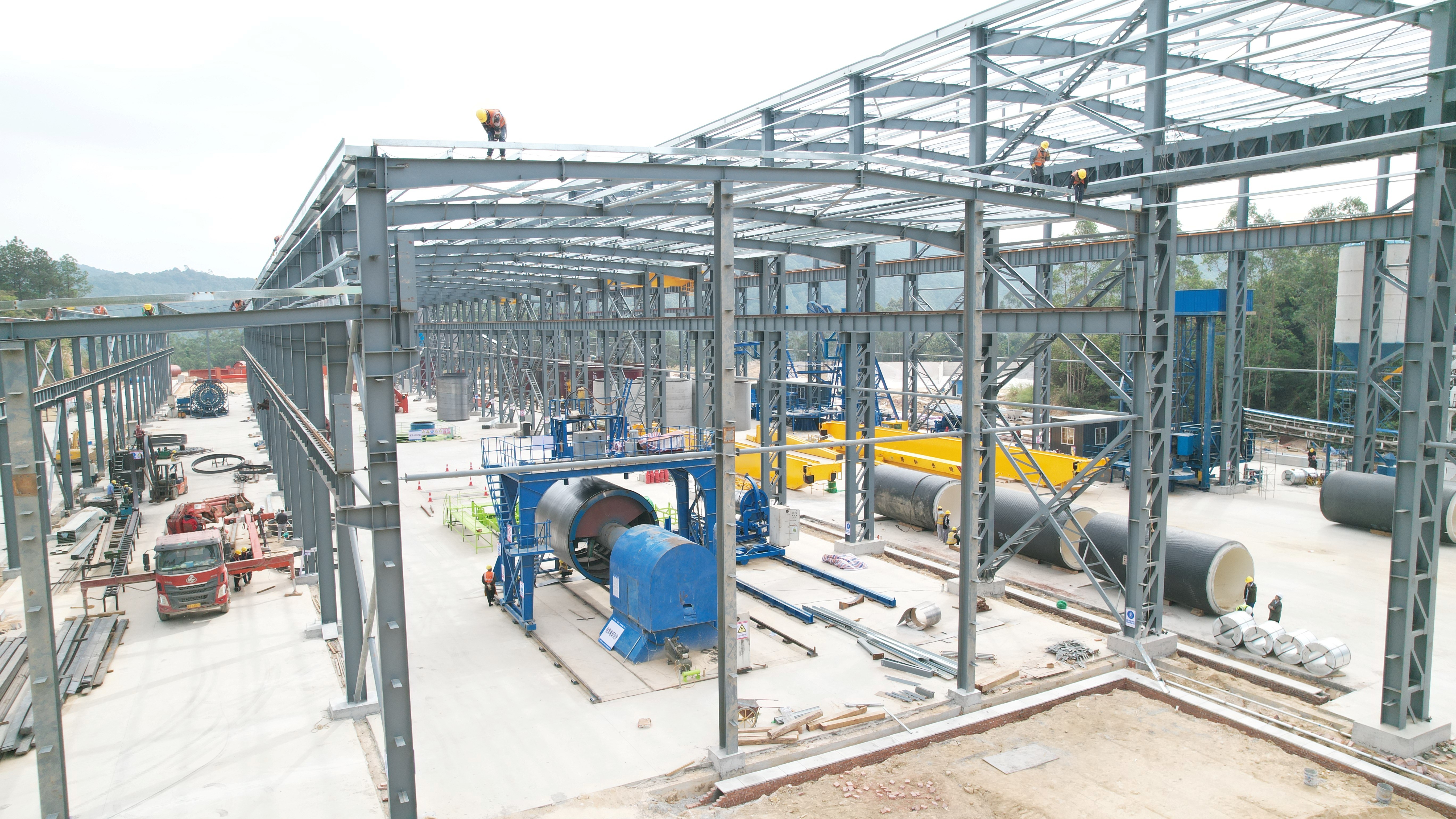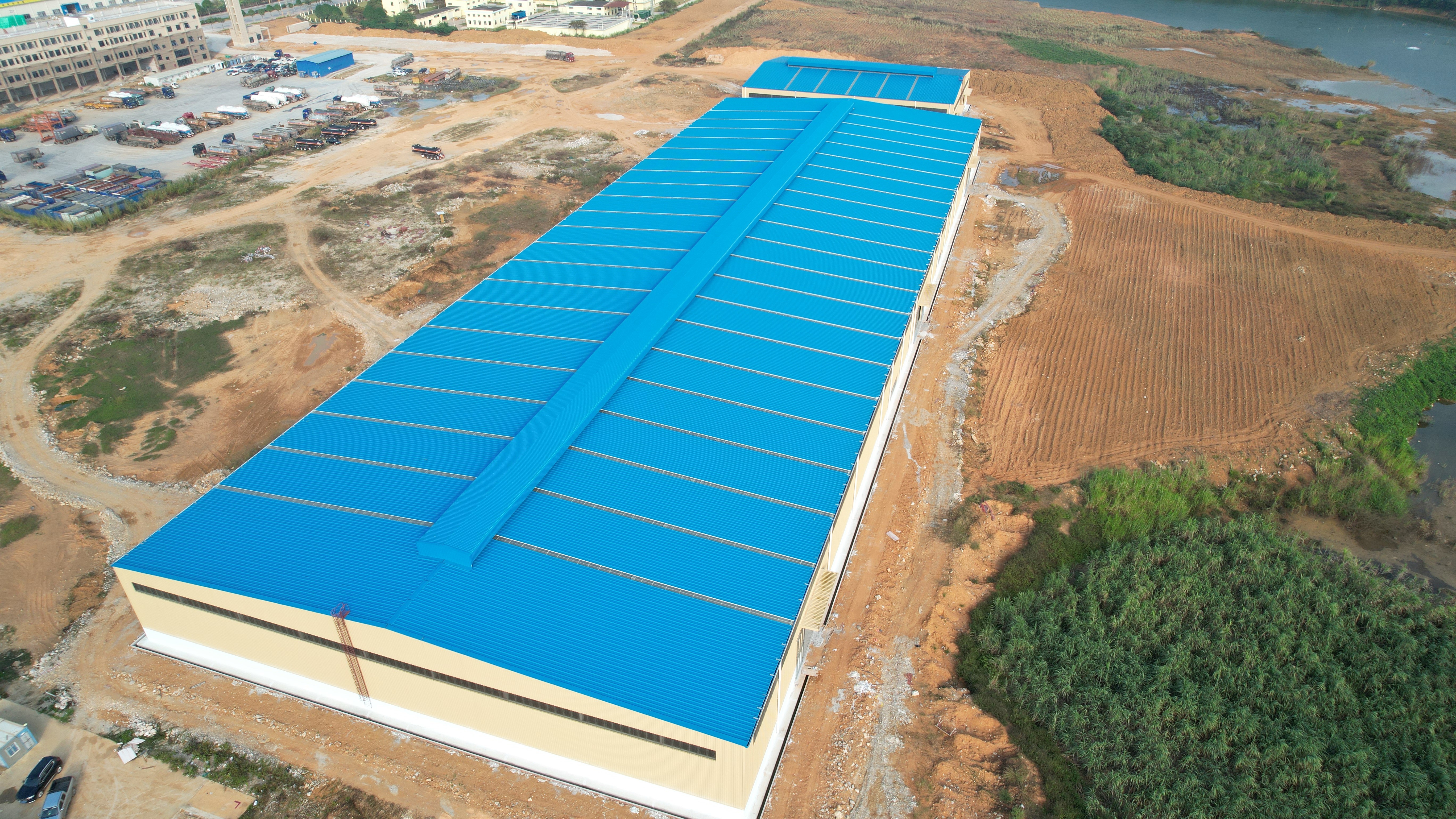What is a steel structure factory building
Release time:
2025-05-07
Steel structure factory buildings refer to industrial factory buildings constructed with steel (such as section steel, steel plates, etc.) as the main load-bearing structural materials. Its main structure is composed of steel columns, steel beams, steel trusses and other components connected by welding or bolts. It features high strength, fast construction and strong flexibility, and is widely used in manufacturing, logistics and warehousing, energy and chemical industries and other fields.
Structural composition
1.The load-bearing framework is composed of steel columns, steel beams, steel trusses, etc. These steel components are usually formed through processing techniques such as rolling, welding, and bolt connection, creating a stable frame system that bears the vertical and horizontal loads of the roof, walls, and internal equipment and goods.
2.The roof and walls are mostly made of lightweight panels such as color steel plates and sandwich panels, which are fixed to the load-bearing structure through self-tapping screws and other connecting parts. This not only effectively encloses the factory space, providing shelter from wind and rain and insulation (sandwich panels have this function), but also reduces the overall structural burden due to their light weight.

In terms of advantages
1.The construction speed is fast. Compared with traditional reinforced concrete structure factories, steel structure components can be prefabricated and processed in factories, and only simple assembly is required on site. The construction period is shortened by 30% to 50%, and it is less affected by weather, enabling enterprises to start production and operation more quickly and saving time costs.
2.The spatial layout is flexible. There are no excessive load-bearing walls or columns inside, which makes it convenient to flexibly divide functional areas according to production needs. It can easily achieve a span of over 30 meters, meeting the requirement of no columns inside the factory building. The layout of the production line can be adjusted at will, and equipment can be added or removed, which is convenient for later height-increasing, expansion or disassembly and relocation, and can adapt to the changes of different development stages of the enterprise.

3.High strength and light weight. Steel has a relatively high strength-to-weight ratio, capable of withstanding large loads while reducing the burden on the foundation. In some sites with poor geological conditions, it is more likely to meet the requirements of structural stability.
4.Environmentally friendly and sustainable. Steel is a recyclable material with a recycling rate exceeding 90%. It generates less construction waste and conforms to the trend of green buildings. After the factory building is demolished, most of the steel can be recycled, and the construction process is relatively clean, with less pollution such as dust and noise.

Applicable scenarios
It is widely used in various manufacturing industries, such as mechanical processing, automotive manufacturing, electronic and electrical production, and other industries that require large open Spaces and large-span factories. It is also commonly found in the warehousing and logistics field, meeting the demands of goods storage and rapid turnover. Additionally, it is highly favored in some temporary factory construction projects with tight construction period requirements.

Anti-corrosion and fireproof treatment
1.Steel materials need to be coated with anti-corrosion paints (such as galvanizing and epoxy resin), and enhanced protection is required in humid southern areas.
2.Fire prevention can be achieved by spraying fireproof coatings or covering with fireproof boards to meet the fire resistance limit requirements.
Design and Construction specifications
1.It must comply with the "Steel Structure Design Standard" and seismic codes to prevent structural instability.
2.The quality of node connections (welding/bolts) directly affects safety and requires strict inspection.
Comparison with other structures
| Comparison item | Steel structure factory building | Concrete structure factory building |
|---|---|---|
| Construction period | 3 to 6 months (fast) | 8 to 12 months (slow) |
| Span capacity | Over 30 meters (excellent) | Usually less than 15 meters (restricted) |
| Environmental friendliness | Recyclable (excellent) | There is a lot of (poor) construction waste |
| Seismic resistance |
Good ductility and strong seismic resistance (excellent) |
High brittleness and relatively weak seismic resistance (medium) |

Summary: Steel structure workshops have become the mainstream choice for modern industrial buildings due to their advantages such as high efficiency, flexibility, and environmental friendliness. They are particularly suitable for projects with high requirements for construction period, space, or environmental protection. However, attention should be paid to anti-corrosion, fire prevention, and quality control of nodes.
Guangxi Zuojiang Science and Industry Construction Co., Ltd. provides design drawings, offers free detailed drawing services, and undertakes various steel structure factory building projects and sports venue grid structure projects. Welcome to visit our factory. Factory address: No. 59, Airport Avenue, Fusui Economic Zone, Nanning Airport, China-Asean






